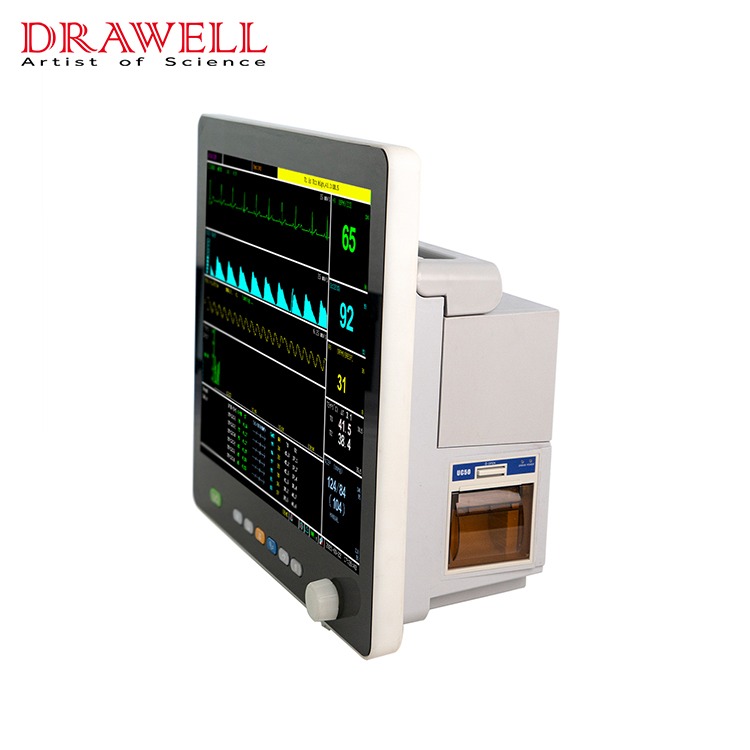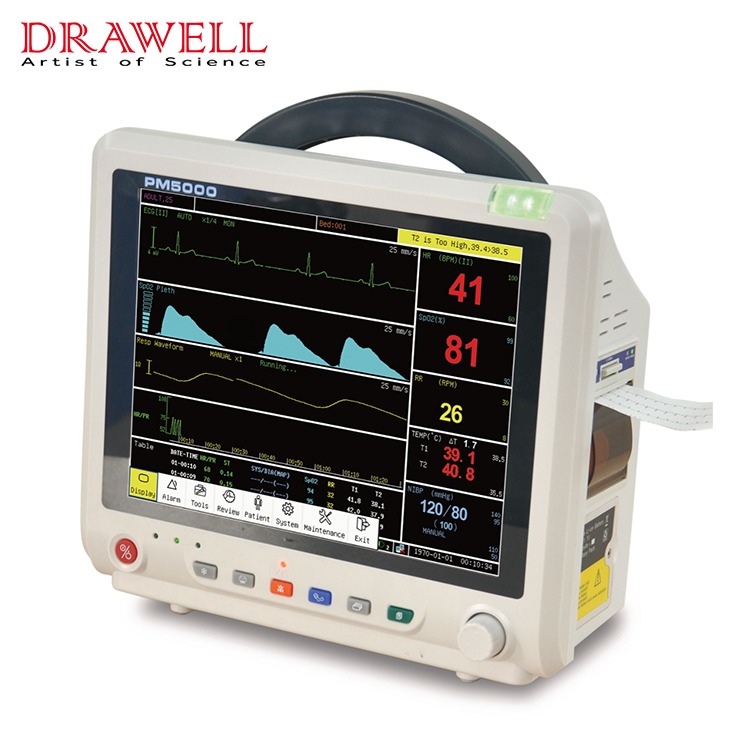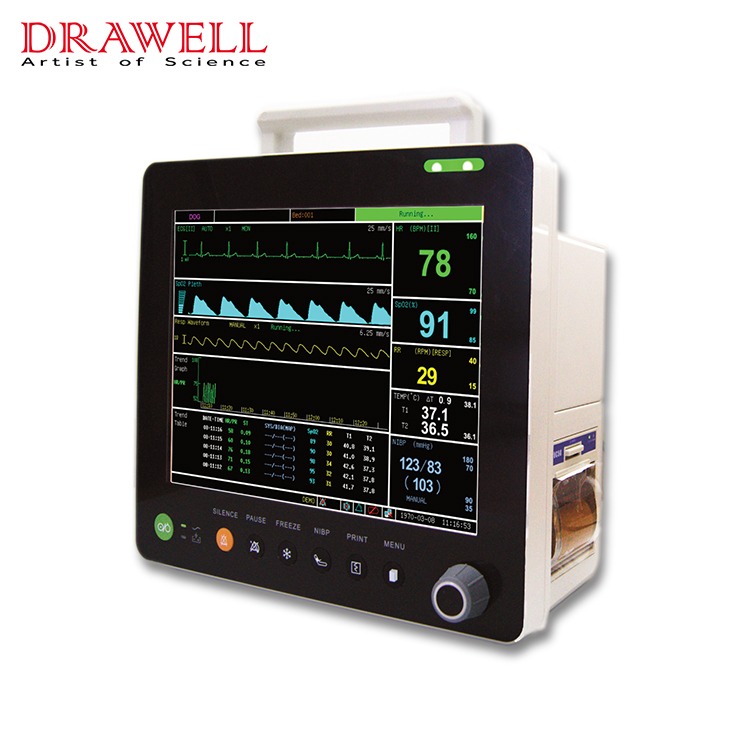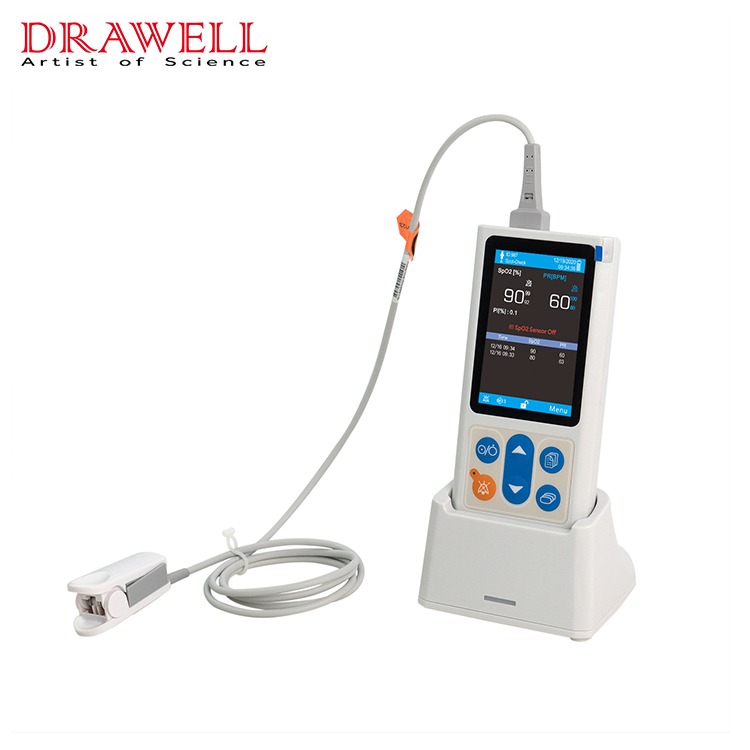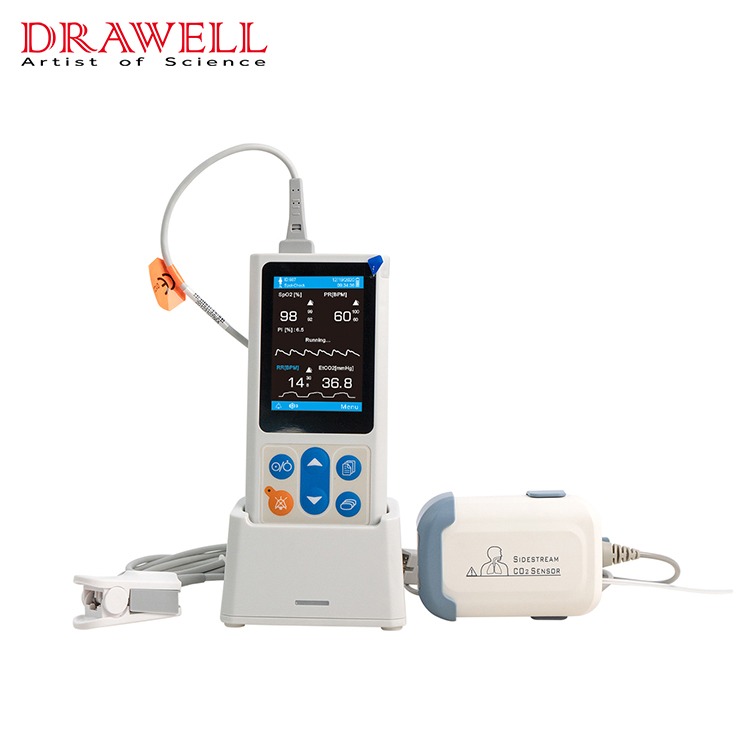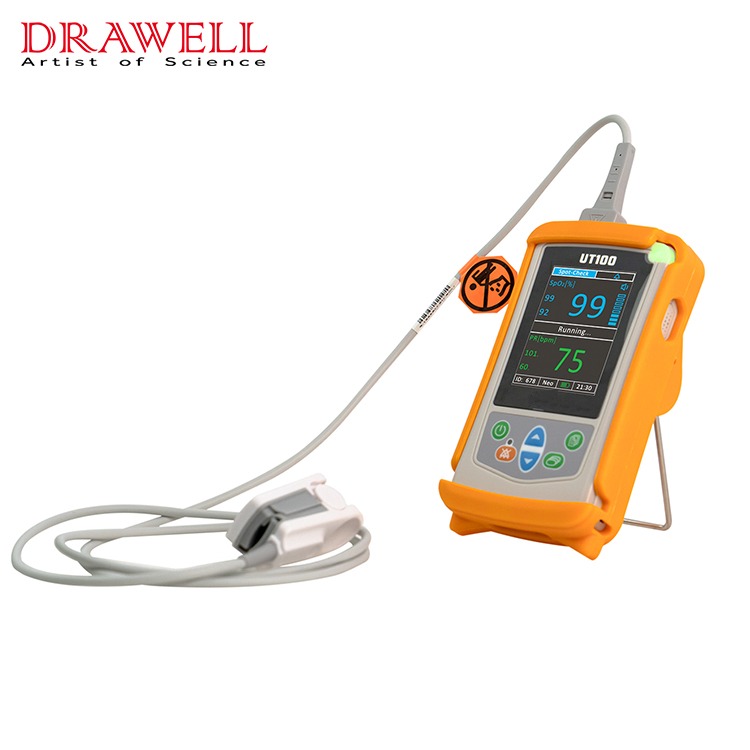Proficient in the operation skills of the Patient Monitor (heart monitor) is a skill that every medical nurse should master. For the use of ECG monitors, what are the key points of operation that cannot be ignored?
Point 1: What is the difference between 3-lead and 5-lead ECG leads?
The 3-lead ECG leads can only obtain ECGs in leads I, II, and III, while the 5-lead ECG leads can obtain ECGs in leads I, II, III, AVR, AFV, AVL, and V.
To facilitate quick connection, we use the color marking method to quickly paste the electrode pads in the corresponding position. The 3-lead ECG lead colors are marked as red, yellow, green or white, black, and red; the 5-lead ECG lead colors are marked as white, black, red, green, and brown.
The electrodes with the same color in the leads of the two specifications are placed in different positions. It is more reliable to use the English abbreviations RA, LA, RL, LL, and C to determine the position than to memorize the color.
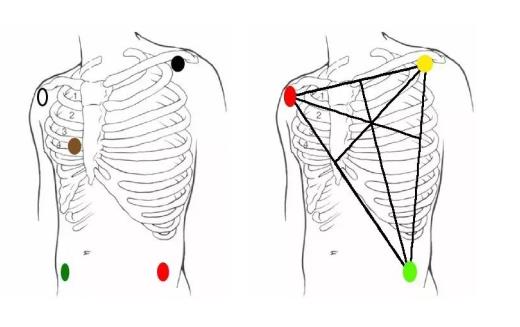
Point 2: Why do you advocate wearing blood oxygen saturation finger cuffs first?
Because wearing the blood oxygen saturation finger cuff is much faster than connecting the ECG lead wire, the patient’s pulse rate and blood oxygen saturation can be monitored in the shortest time, and the medical staff can quickly complete the evaluation of the most basic physical signs of the patient.
Point 3: Can the SpO2 cuff and the sphygmomanometer cuff be placed on the same limb?
Blood pressure measurement will block and affect arterial blood flow, resulting in inaccurate blood oxygen saturation monitoring during blood pressure measurement. Therefore, it is not clinically recommended that the blood oxygen saturation finger cuff and the automatic blood pressure monitor cuff be placed on the same limb.
Point 4: For patients with continuous ECG monitoring, should the electrode pads be replaced?
Need to be replaced, because the electrode pads stick to the same part for too long, which will lead to the occurrence of rashes and blisters, so you should check the skin condition frequently. Occurrence of skin breakage in a patient.
After stopping ECG monitoring, remember to remove the electrodes.
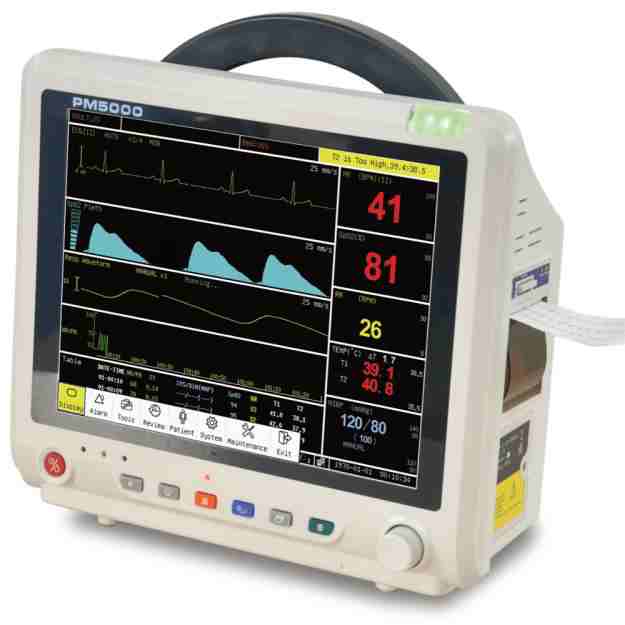
Point 5: What should be paid attention to in non-invasive blood pressure monitoring?
(1) Pay attention to avoiding blood pressure monitoring on the limbs with internal fistula, hemiplegic limbs, the same direction limbs of patients with breast cancer resection, infusion limbs, and limbs with edema and hematoma skin damage. It is also necessary to pay attention to patients with poor coagulation function and low-grade cell disease to avoid medical disputes caused by measuring blood pressure.
(2) The measurement part should be replaced routinely, and experts recommend changing it every 4 hours. Avoid continuous measurement on one limb, which can lead to purpura, ischemia, and nerve damage in the limb that rubs against the cuff.
(3) When measuring adults, children, and newborns, pay attention to the selection and adjustment of the cuff and pressure value. Because the pressure exerted on adults is used in children and neonates, it can threaten the safety of children; and when the device is set in neonates, the blood pressure of adults cannot be measured.
Point 6: There is no module for monitoring breathing on the monitor. How is breathing detected?
The respiration on the monitor relies on the electrode pads of the electrocardiogram to sense the impedance changes of the thorax and display the waveform and data of the respiration.
Because the electrodes on the lower left and upper right are breathing sensing electrodes, their sticking position is very important. The 2 electrodes should be placed as diagonally as possible for optimal respiration waves.
If the patient mainly breathes abdominally, the lower left electrode should be glued to the most obvious part of the left abdomen.
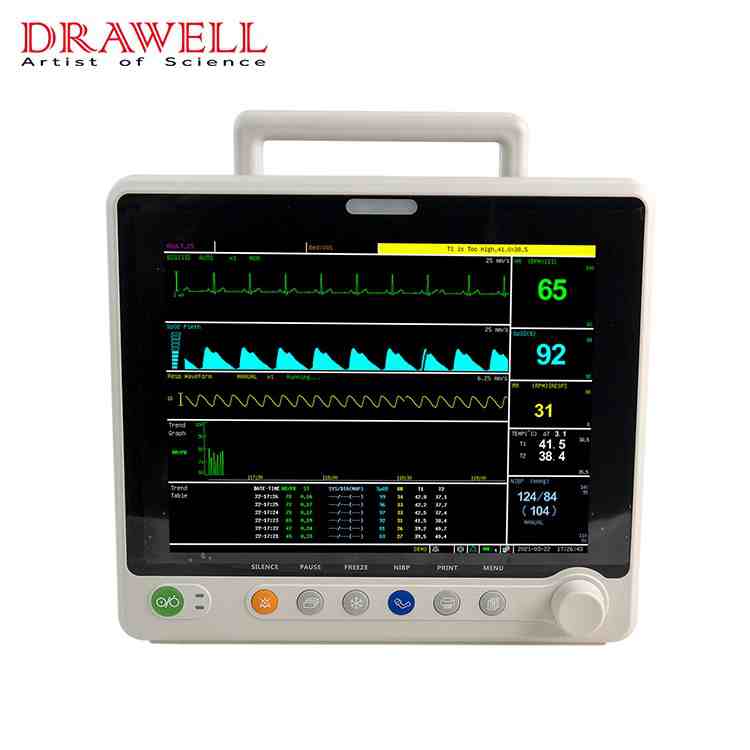
Point 7: Each parameter has an alarm range, how to set it?
Alarm setting principle: ensure patient safety, minimize noise interference, and do not allow the alarm function to be turned off unless it can be temporarily turned off during rescue. The setting of the alarm range is not a normal range, but a safe range.
Alarm parameters: heart rate is 30% above and below the own heart rate; blood pressure is set according to the doctor’s order, the patient’s condition, and basic blood pressure; oxygen saturation is set according to the condition; the alarm volume must be heard within the nurse’s working range; Adjust and check at least once per shift.
Point 8: What should I do if the monitor waveform cannot be displayed?
1. Check
First confirm whether the electrode pads are properly pasted, check the placement position of the cardiac electrode pads, check the quality of the cardiac electrode pads, and check whether there is any problem with the lead wire based on the pasting and quality of the electrode pads.
Check that the connection steps are correct, check whether the operator’s lead mode is connected according to the connection method of the ECG monitor, and avoid the lazy and trouble-free method of connecting five links and only three links.
After eliminating the fault of the ECG cable, if the waveform still does not appear, it may be that the “ECG signal line” on the parameter socket board is not in good contact, or the ECG board, the connecting line of the main control board of the ECG board, and the main control board are faulty.
2. Exclude
(1). Check all the external parts of the ECG leads (the three/five extension wires in contact with the human body should be connected to the corresponding three/five contact pins on the ECG plug. If the resistance is infinite, it means that the lead wire is broken. lead wires should be replaced). Method: Take out the ECG lead wire, align the convex side of the plug of the lead wire with the groove of the “ECG” jack on the front panel of the main unit,
(2). The ECG cable can be exchanged with other machines to confirm whether the ECG cable is faulty, whether the cable is aging, and whether the pins are damaged.
(3). If the waveform channel of the ECG display shows “no signal reception”, it means that there is a problem with the communication between the ECG measurement module and the host, and the prompt still exists after the machine is turned off and on, and the supplier needs to be contacted.
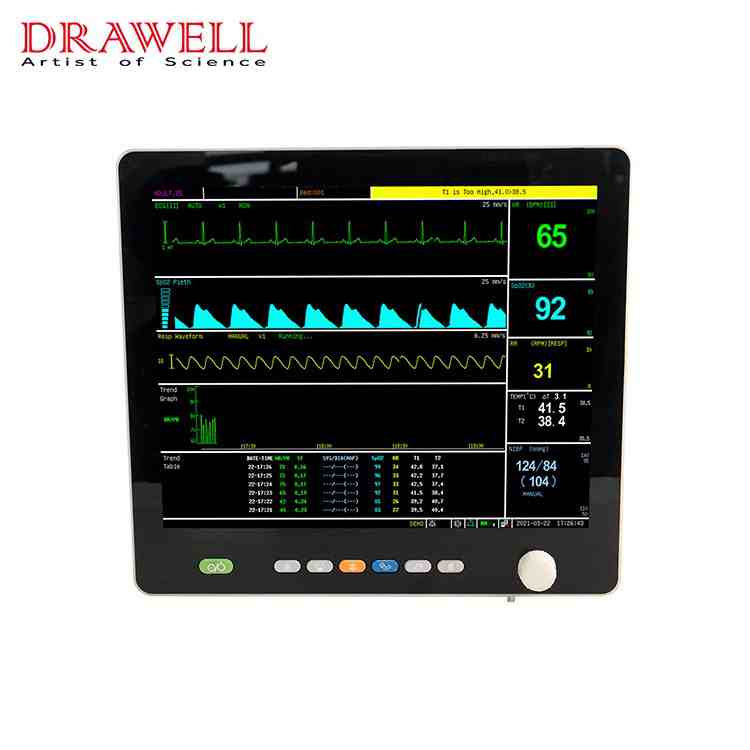
Tips for Patient Monitor
1. The connection steps should be correct:
a. Wipe the 5 specific positions of the human body with the sand pad on the electrode pad, and then use 75% ethanol to clean the surface of the measurement site, to remove the stratum corneum and perspiration on the human skin and prevent poor contact with the electrode pad.
b. Fasten the electrode head of the ECG lead wire with the electrodes on the 5 electrode pads.
c. After the ethanol has evaporated cleanly, stick the 5 electrode sheets to the specific position after cleaning to make the contact reliable and not fall off.
2. Do a good job of propaganda and education for patients and their families: instruct patients and other personnel not to pull the electrode wires and lead wires, and inform patients and relatives that they should not apply and adjust the monitor without authorization, causing damage to the instrument. Some patients and their family members have a sense of mystery and dependence on the monitor, and the oscillometric changes in the monitor will cause anxiety and panic. Nursing staff should make adequate and necessary explanations to avoid interfering with normal nursing work and affecting the relationship between nurses and patients.
3. Pay attention to maintenance when using the monitor for a long time. The electrodes are easy to fall off after long-term use, which affects the accuracy and monitoring quality. Change it every 3-4 days; at the same time, check and pay attention to the cleaning and disinfection of the skin, especially in the hot summer.
4. Professional review and maintenance When the instrument is found to be seriously abnormal during the monitoring process, it is best to ask the professional ECG room personnel to review and diagnose it, and the manufacturer’s maintenance personnel are professionally repaired.
5. Connect the ground wire when connecting. Method: When the ground wire is connected, the end with the copper sheet sleeve should be connected to the ground terminal on the rear panel of the host. (The method is to unscrew the knob cap of the ground terminal, put the copper sheet sleeve on, and then tighten the knob cap). The other end of the ground wire has a clip, please clip it to the common ground terminal of the building facilities (water pipes, radiators, and other places that are directly connected to the ground).

